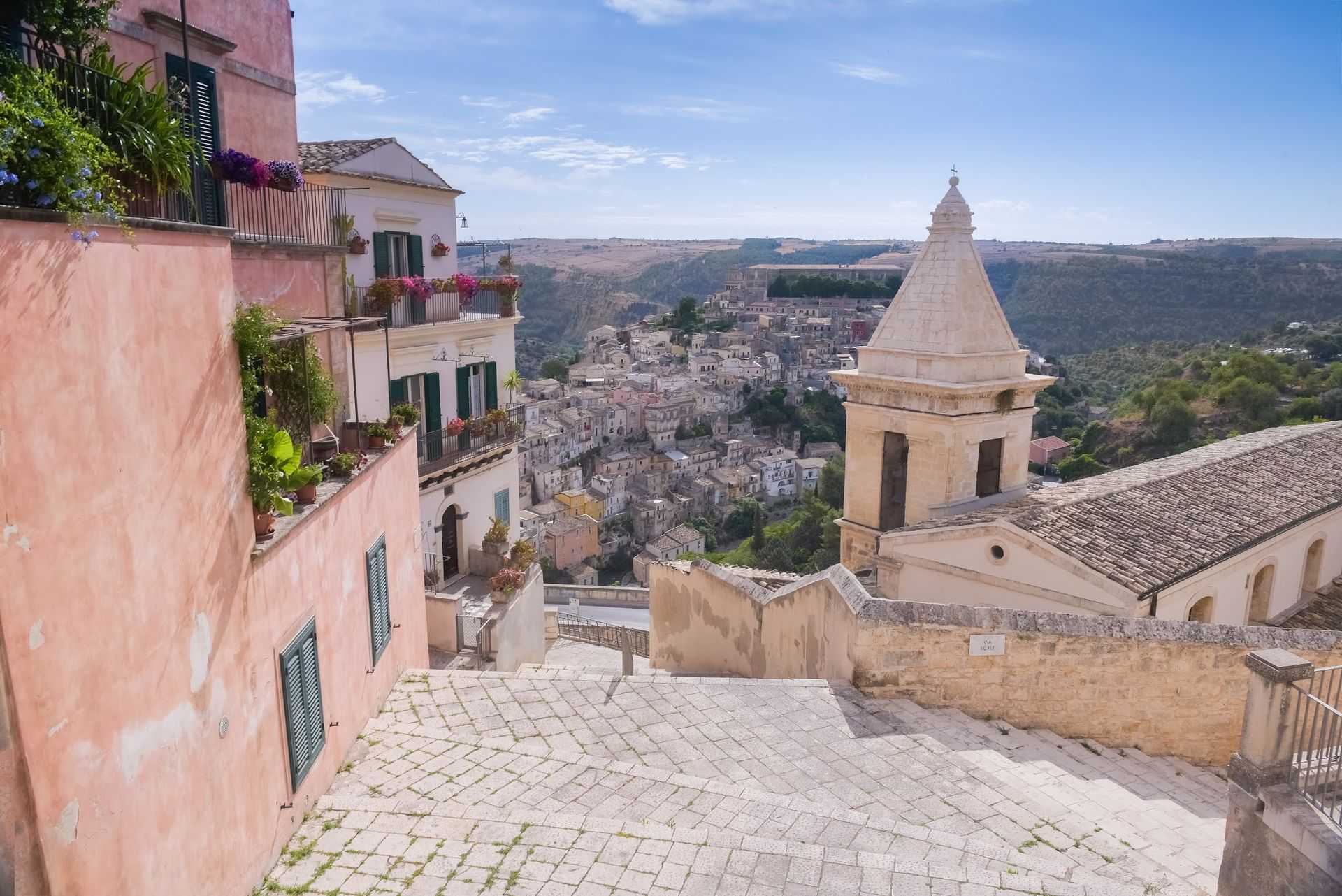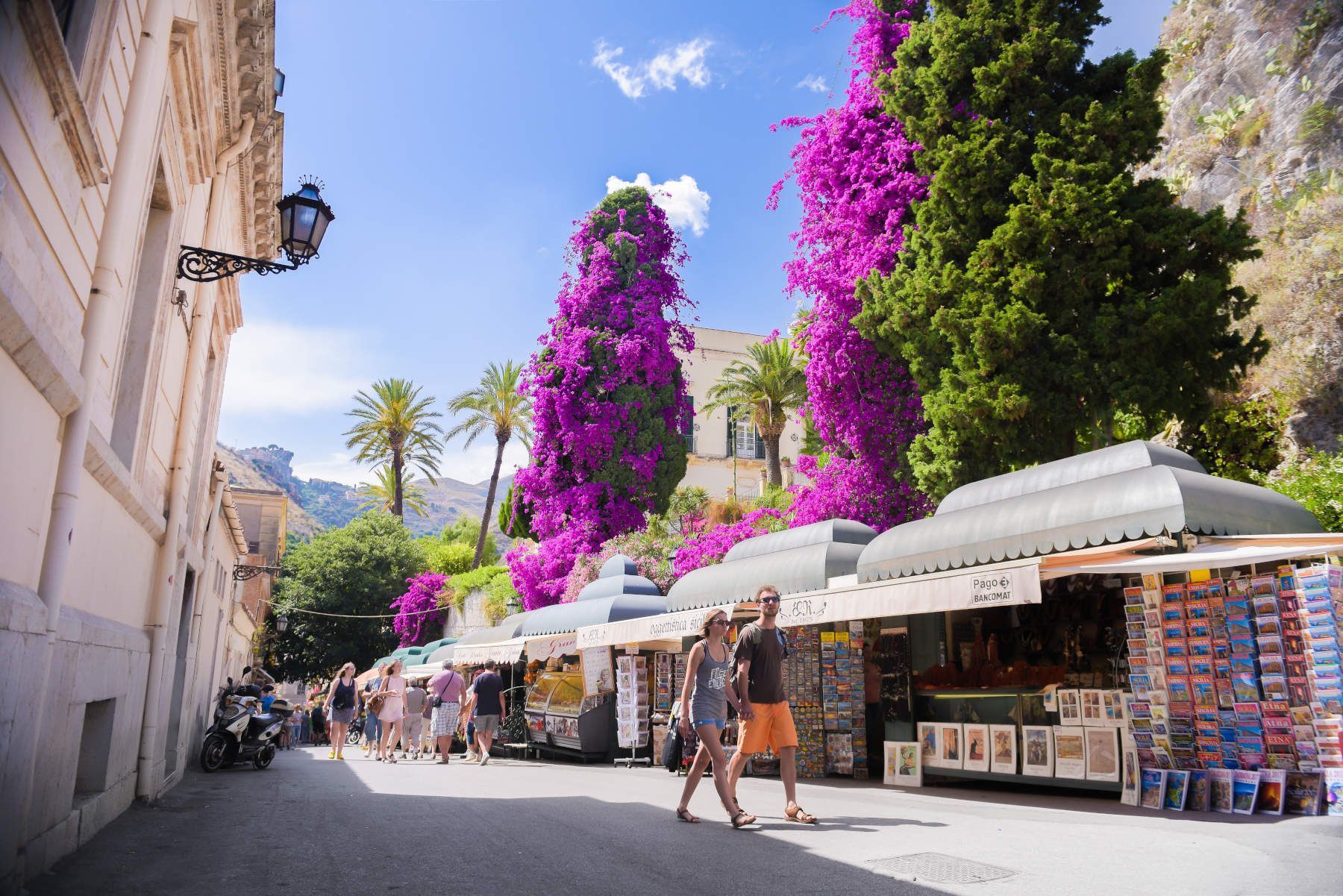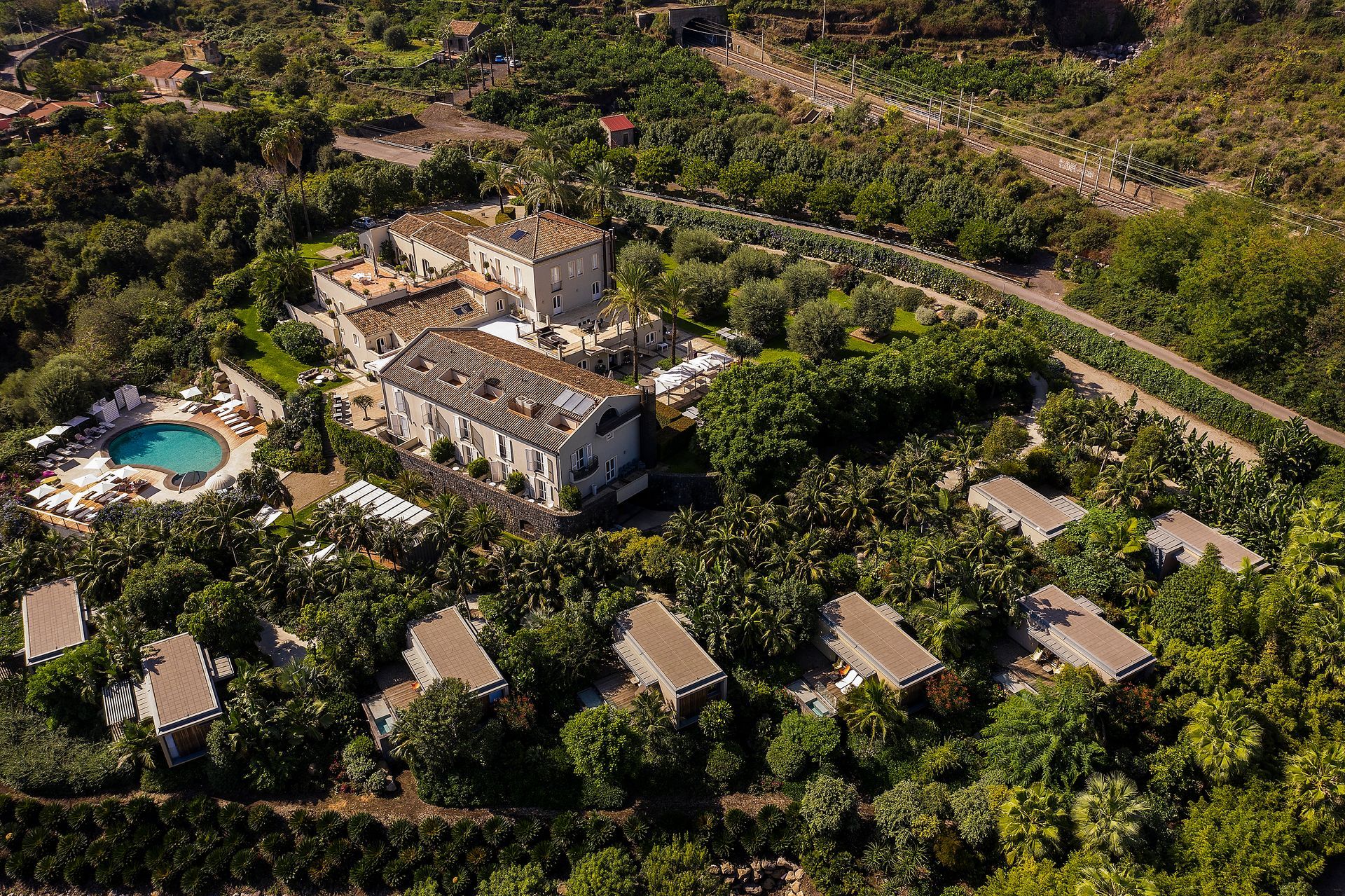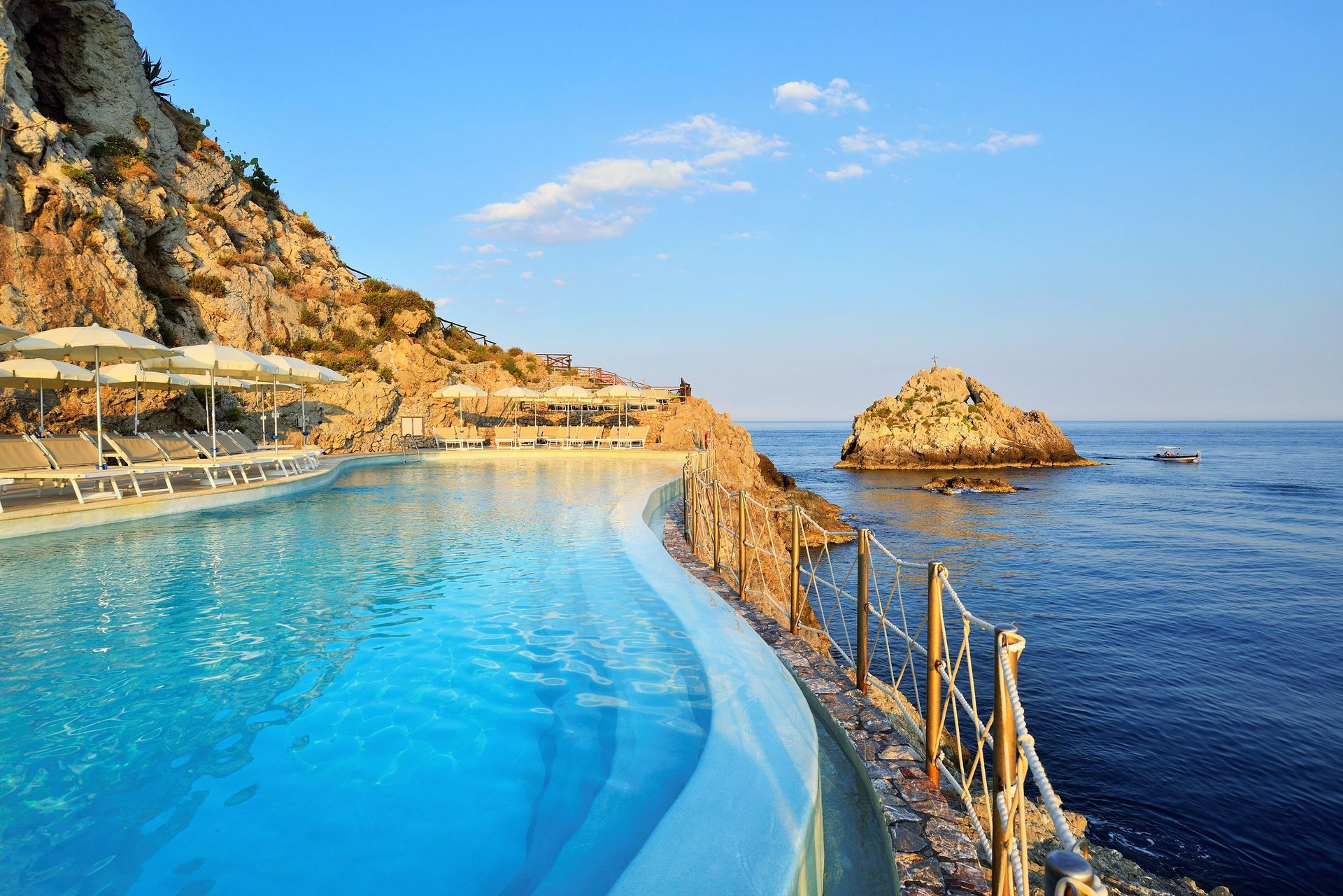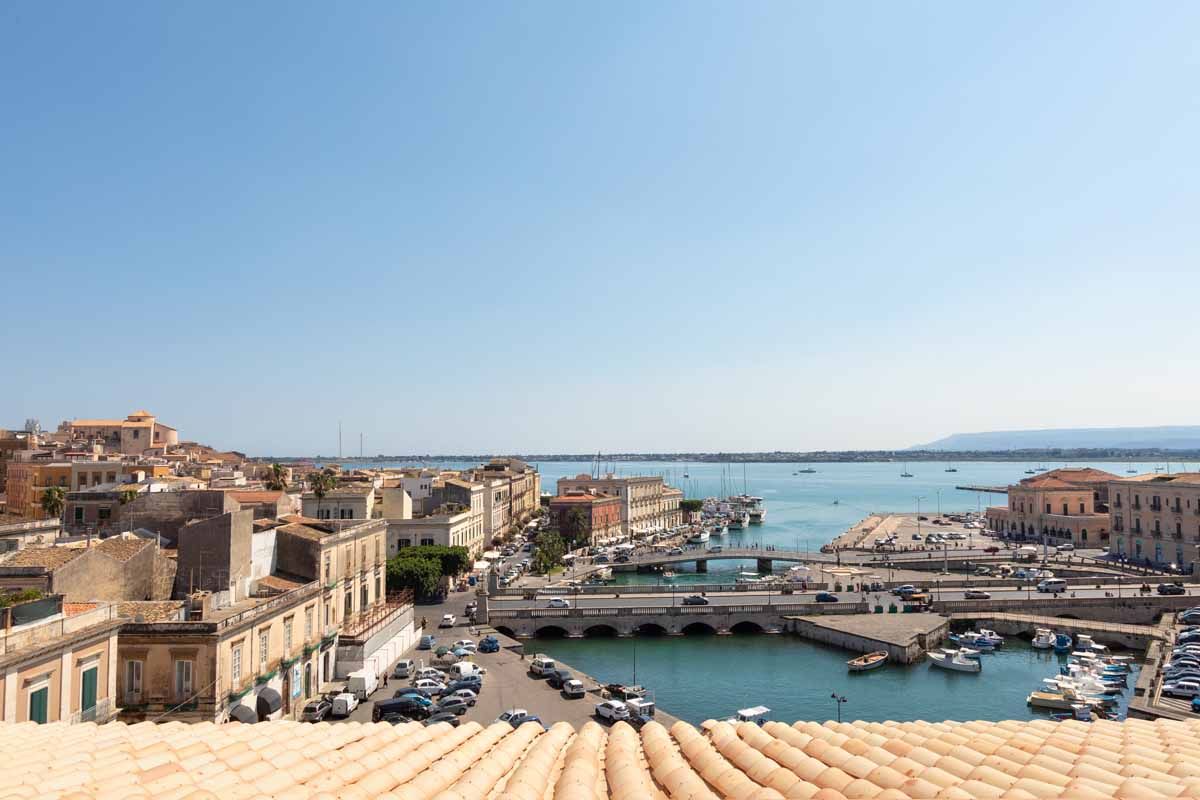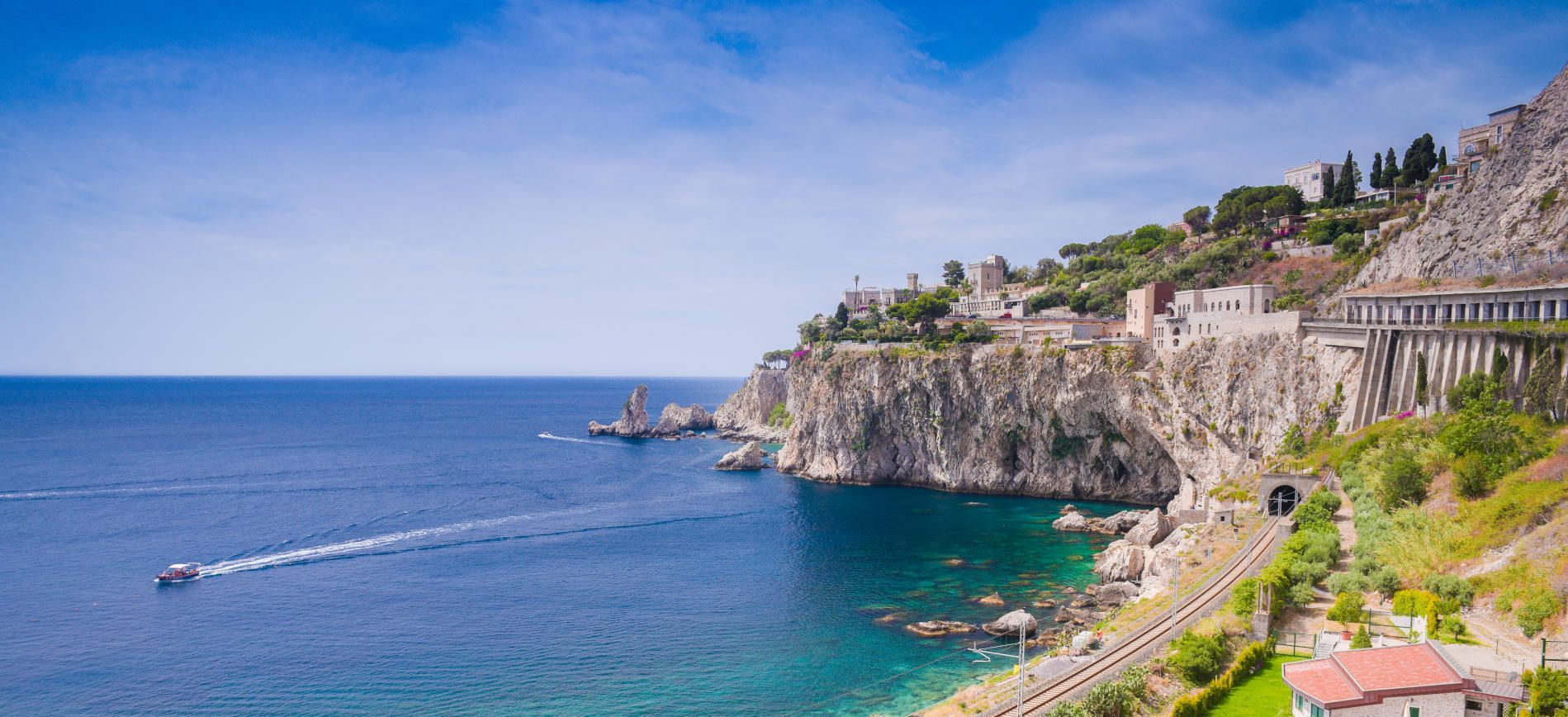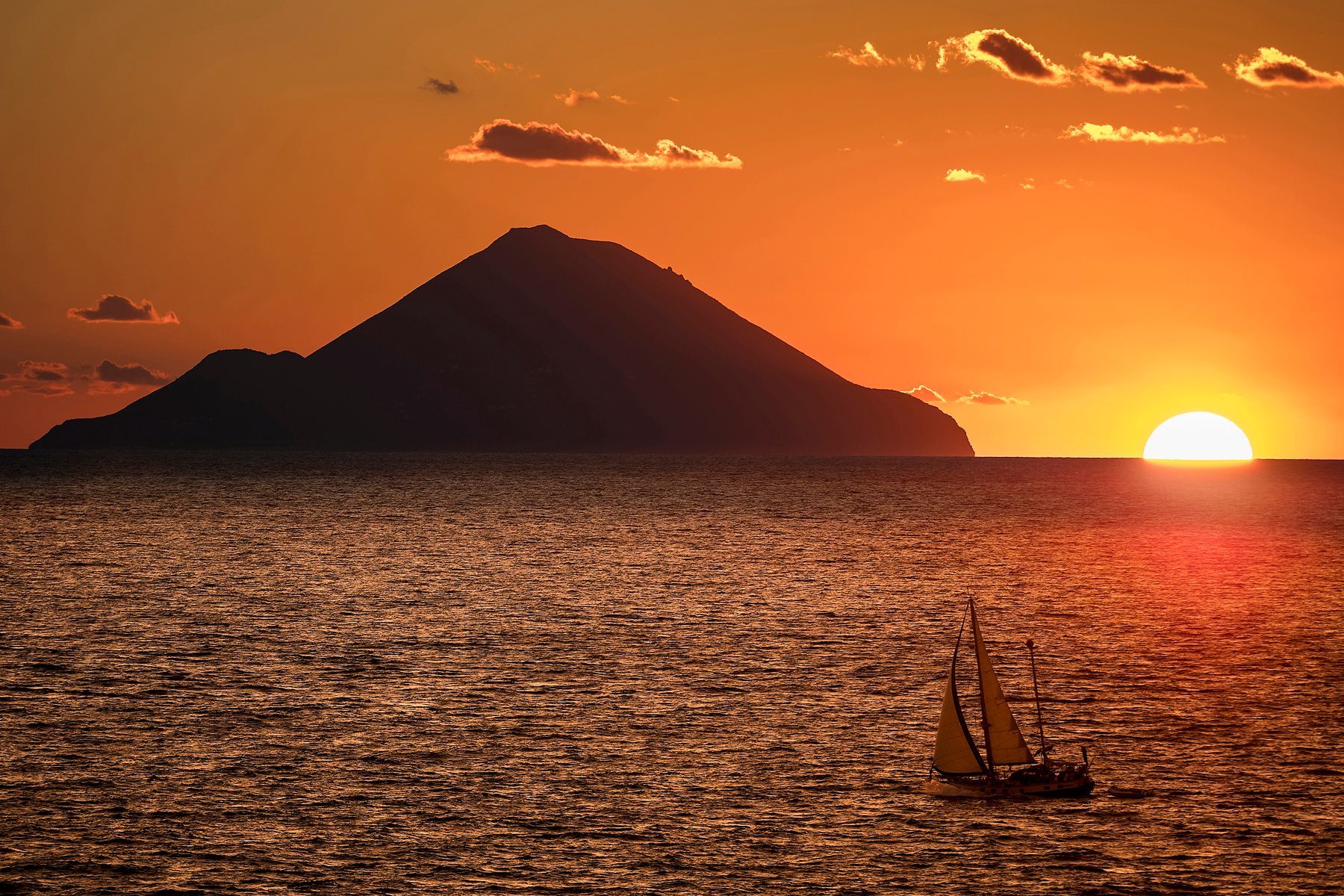Sicily In July: What You Can Expect
The wonderful island of Sicily, off the coast of mainland Italy, is a gorgeous haven in the summertime. A hot Mediterranean climate makes beach holidays and outdoor activities ideal. Exploring the city’s architecture, enjoying the world class food and wandering the narrow streets and shops will be too almost too easy – but what can you really expect from a visit to Sicily in July?
what is sicily like in july?
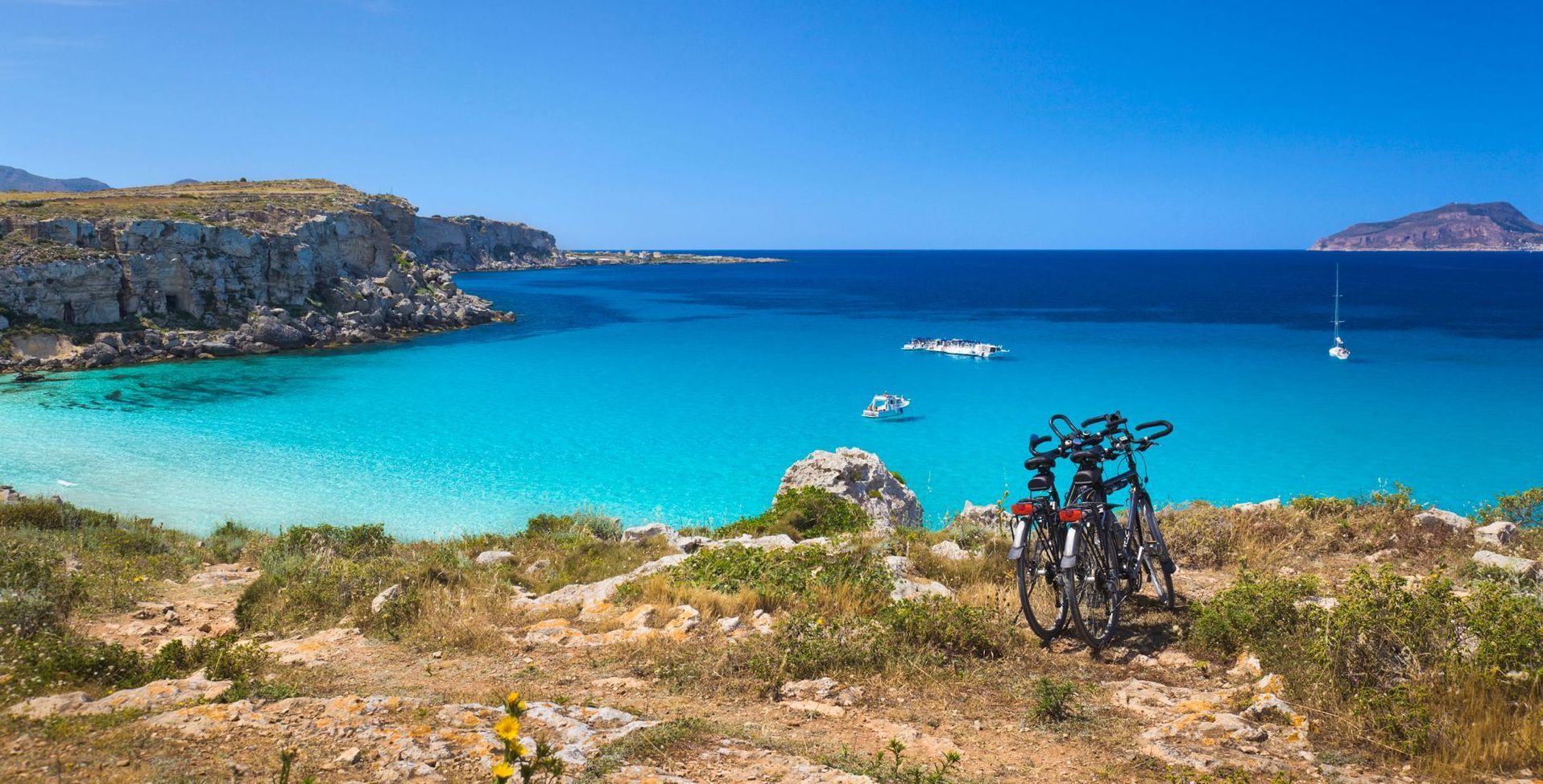
what is the weather like in july in sicily?
Whilst Sicily boasts an all-year-round warm climate, the best weather is the hot and dry spell from May to October. With a 6-month blissful summer, average temperatures in July hover around 29°C during the day, while the evenings cool down to a comfortable 22°C. Temperatures can peak around the mid-thirties and can drop to the mid-teens. Expect clear blue skies, warm breezes and very minimal rainfall, with only a small chance of light showers.
The sea temperature averages around 25-27°C, ideal for swimming, snorkelling, or dipping your toes in! Whilst the Sirocco (from the Sahara to the south) and mistral (from the northwest) winds can blow during the summer months, the island generally maintains a pleasant climate. If you prefer slightly cooler temperatures, explore the mountain regions to escape the summer heat. You will be spoiled by sunshine during your July visit, so make sure you take sunscreen with you!

Villa Anthea, Montallegro
what is the food like in sicily in july?
The Sicilian food culture has been influenced by many other different cultures, which is what makes their food so unique. Greek, Arab, French and Spanish are some of the main players when it comes to inspirations and influences. When blended, Sicily and mainland Italy offer a unique culinary experience, from couscous dishes in the west of the island to street food stalls in Palermo with snacks that were brought to the city by the Arabs and the Greeks.
During the warmer months in Sicily, you will find a plethora of market stalls, stacked high with olives, aubergines, capers, and tomatoes all fresh and tasting of summer. Those ingredients combined along with some onions and celery create the traditional Sicilian dish ‘Caponata’. Towards the end of the year, freshly picked sweet figs are used for cakes and tarts as well as being a wonderful accompaniment to a creamy ricotta.
Daily market stalls and fresh local produce will be present every morning with cheeses, warm ricotta, baskets of olives, toasted nuts, dried fruit and capers. Fish also features heavily on menus, with a thriving fish industry given the location of the island. Other sea related dishes include sea urchins with pasta, mussels and clams with spaghetti, boiled octopus and sword fish with olives. The sea is plentiful in providing delicious delicacies for the island.
A sweet treat is always the best way to finish a spectacular meal. Those with a sweet tooth won’t be disappointed! Locally grown ingredients such as almonds, pistachios and lemons are often the key factors in a traditional Sicilian dessert. Cannoli are pastries consisting of a tube-shaped shell of fried pastry dough, filled with a sweet creamy filling containing ricotta cheese. And of course we can’t forget the gelato - artisanal gelato in Italy typically contains 6 to 9% butterfat, which is lower than other styles of frozen dessert, along with a slower churn and containing no eggs makes gelato softer, smoother and intensely flavourful.

Cannoli
what is the culture like in july in sicily?
Sicily remains unspoilt and authentic despite its popularity among tourists. The Sicilians have carefully protected and preserved the buildings and architecture to this day. Sicily offers the unique Mediterranean lifestyle unlike any other island. Whilst it is still very much a part of Italy, Sicily and its inhabitants uphold the island’s cultural autonomy with pride. The buzz and friendliness of the locals shines through in the service, hospitality and passion for their historic island. A unique infusion of cultures not only impacts greatly upon the island’s archaeology, but also its cuisine, dialect and traditions, making Sicily a wonderful and charming holiday destination.
July is the time of year where you can experience many festivals and events in Sicily. Festa di Santa Rosalia is held between the 10th -15th July and celebrates the patron saint Santa Rosalia. Tradition says after being led into a cave by two angels away from her noble family, Rosalina appeared to a sick woman and a hunter and ordered them to carry her bones through Palermo in a procession. After her bones had been caried around the city three times, the spreading of the plague had stopped. The festival is now a part of Sicily’s heritage, celebrating Rosaline every July.
Kal’s Art Festival is from July to mid-September, which showcases music, cinema, theatre and art in the capital of Palermo, with a particular focus on young European artists. Street performances, shows, exhibitions and art installations can be found dotted around several parks and piazzas which visitors to the city are highly encouraged to experience. Alkantara Fest works to bring in live acts, music workshops, art exhibitions and food, wine and beer for Mount Etna’s three-week music festival down by Alcantara river. Taormina Arte is staged at Teatro Greco between June and September and showcases a variety of performances from live music to opera, theatre and dance. The theatre alone is worth a visit, having been built in 3BC, the ancient ruins come back to life during this festival.

How historic is sicily?
For those interested in history, there is plenty to see in Sicily. All around you from the streets you walk on, to the buildings you pass, to the towns and villages you stroll through, Sicily offers a rich history with many civilizations throughout the decades leaving their own mark on the land. Both the Greeks to the Romans have influenced this interesting and unique island. Sicily has had its fair share of battles including the ‘Siege of Sicily’ beginning in 212 BC when the Romans successfully stormed the city of Syracuse, giving them control of the entire island.
The most prominent influences that can still be seen today are from the Greeks and the Romans. 215 to 750 BC, Greeks arrived in search of land to develop. Sicily proved to be extremely fertile with olives and vines being introduced and when trading began, internal rivalries lead to a bloody war. The Romans defeated the Greeks in Syracuse, bringing 500 years of Sicily’s role at the centre of Magna Graecia (the wealthy land development) to an end. Another notable influence was the Arabs, from 827 BC they invaded Mazara del Vallo with 10,000 Arabs, Berbers, and Saracens (Spanish Muslims). They first conquered Palermo making it their capital, and subsequently became one of the most populous and cosmopolitan centres of the world. They would then go onto to conquer Syracuse.
Many other unique civilizations would come and go through Sicily, each passing through and leaving their own individual mark. The unification of Italy in 1861 led to the Italian Republic in 1946, and Sicily became an autonomous region of Italy. This is just scratching the surface of the history of Sicily. There are many passionate locals and tour guides who will be more than happy to show and discuss their beautiful island in detail with you.
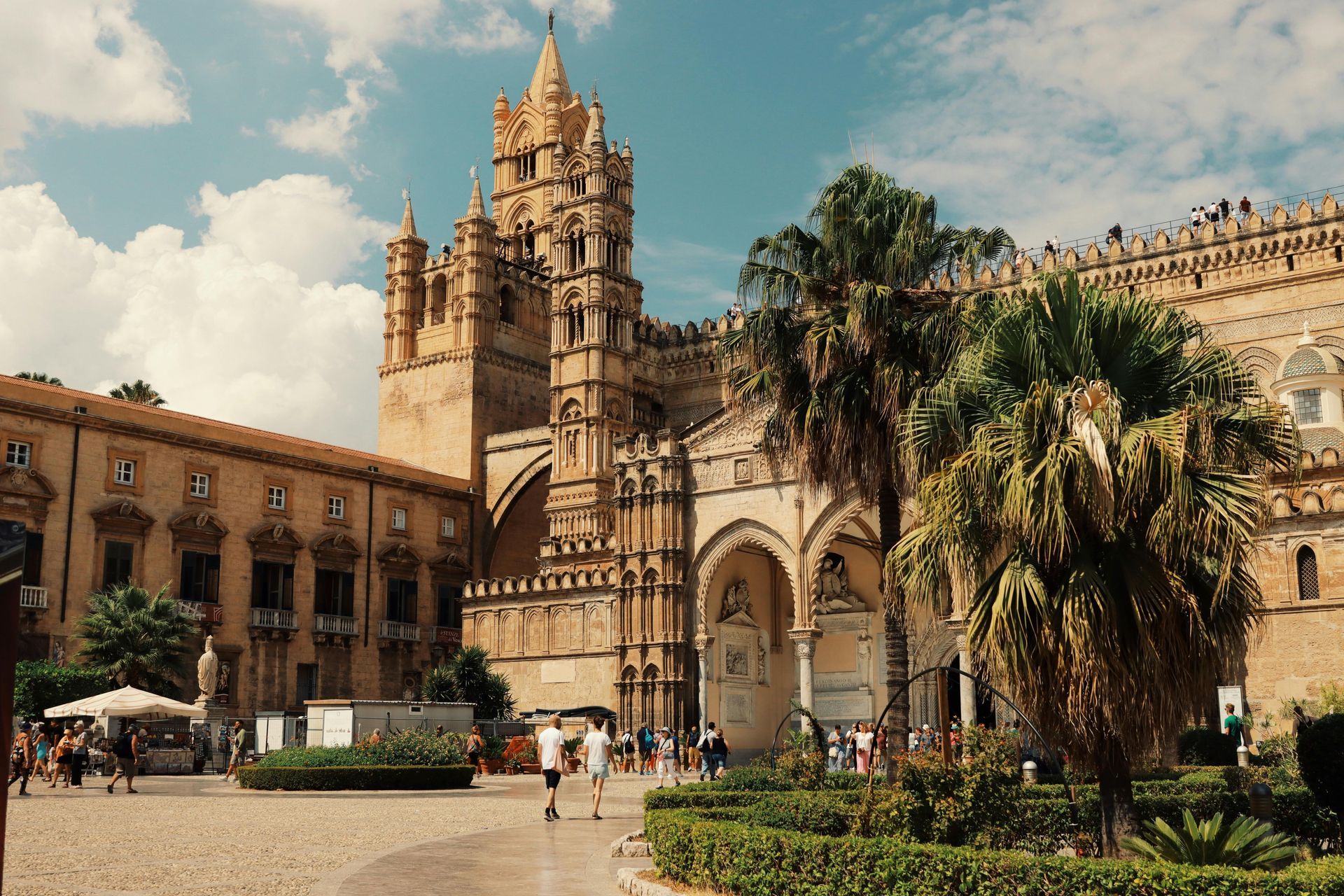
Palermo Cathedral
what are the best things to do in sicily in july?
There is something to do for everyone in Sicily, whether it be lounging on the glorious beaches or exploring the historical sites. There are also an abundance of lively and traditional festivals taking place throughout the year, like Festa di Santa Rosalia. As an Italian island, Sicily welcomes families with children of all ages, couples, or solo travellers looking to experience something new. Read our dedicated blog on the best places to visit in Sicily here.
Visit historical sites such as the Valley of Temples in Agrigento, a fantastic example of the Greek presence in Sicily.
The glorious and imposing Mount Etna stands proudly between the cities of Messina and Catania and in the June 2013 it became a part of UNESCO World Heritage Sites which makes a fascinating and interesting day out.
Take a trip to Syracuse and visit Ortigia island to have a glimpse into the past along the narrow windy streets with local shops selling handcrafted Sicilian souvenirs, along with a plethora of restaurants and cafes with friendly locals waiting to surprise you with their traditional delicacies.
The capital of Sicily is definitely worth a visit being one of the biggest historical centres in Europe, founded in 734BC. The lively markets and delicious street food shouldn’t be missed. Being a fantastic pit stop for refuelling with locals and tourists, this is one of the best places to immerse yourself in Sicilian culture. Visit the Royal Palace of Palermo that stands proudly at the highest point in the city. This is also declared as a UNESCO World Heritage Site, being the oldest royal residence in Europe. The suburban beach Spiaggia di Mondello is beautiful, and there are many waterfront bars and restaurants for a taste of Sicilian cuisine and wine whilst enjoying a fantastic view.
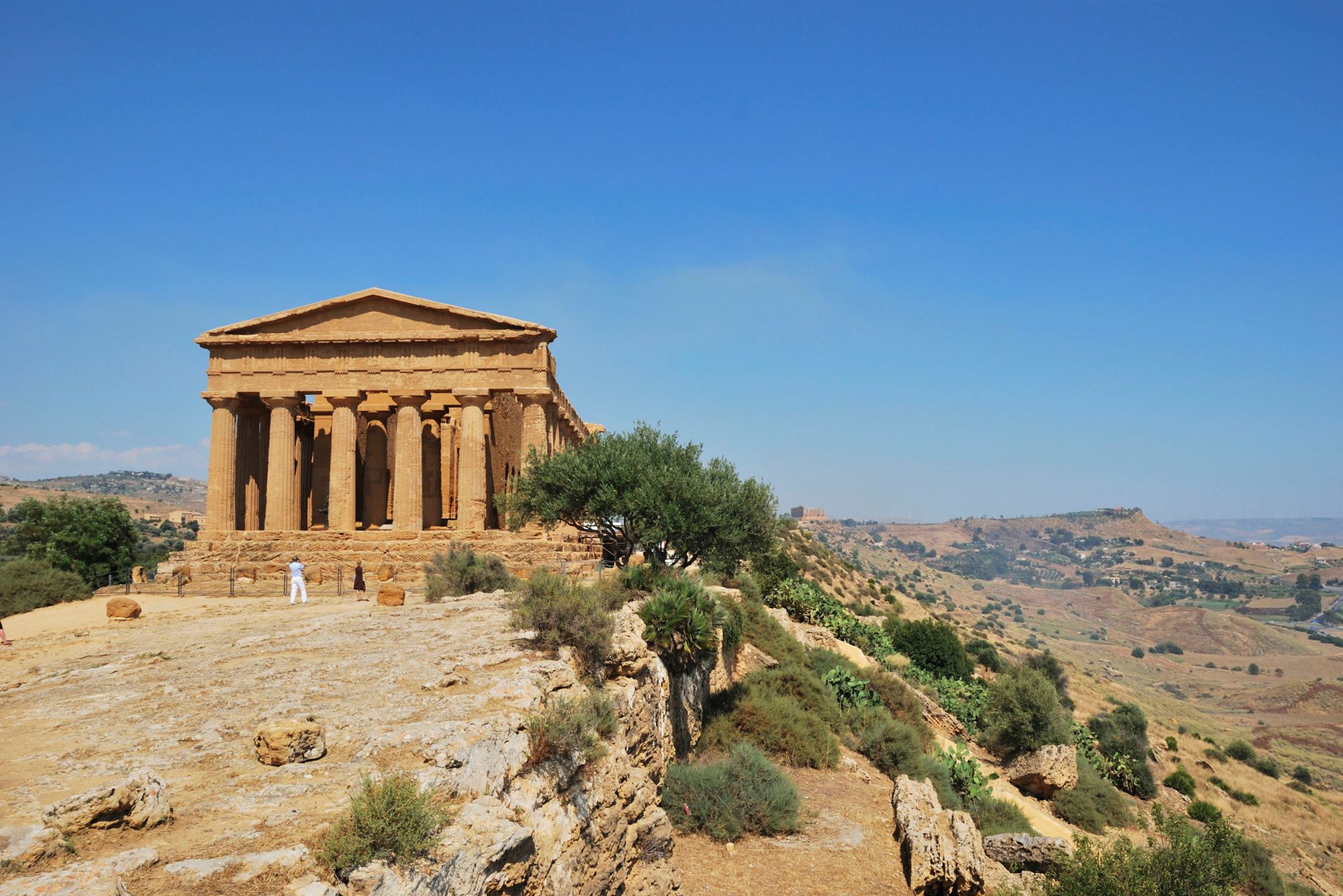
Valley of the Temples, Agrigento
our top tips for visitng sicily in july
Whether you would like to explore the historical sites or relax on the glorious beaches, these tips will make sure you’re covered for your adventure in the Sicily:
- Be mindful of the weather – The weather in July in Sicily, whilst manageable, can also be unpredictable (as we know very well in the UK!) We know hot weather may not suit everyone, so be prepared for spikes in temperatures by wearing light clothing, protecting your skin with sun lotion, and staying hydrated throughout the day. The hottest parts of the day are usually 1pm to 4pm, so plan your sightseeing and itinerary accordingly.
- Embrace the beach scene and explore coastal areas – July is a fantastic time for beach holidays in Sicily. For those looking to relax in the summer sun, there are plenty of opportunities for swimming, sunbathing and water sports. Don’t forget to bring your beach essentials to make the most of Sicily’s beautiful coastal areas.
- Consider a hiring a car – Having a car can make it easier to explore the island at your own pace. If you wish to explore multiple locations or tour the island, driving can provide more freedom to explore further afield. (Please note that you may require an Independent Driving Permit to hire a car in Italy.)
- Explore historical sites – Sicily is known for its dense history and well-preserved archaeological sites. We highly recommend visiting the Valley of Temples in Agrigento as mentioned above, possibly the most well-known archaeological site on the island.
- Enjoy the cuisine – Sample local delicacies and try the fresh seafood. Taste the local Sicilian dishes and try something new – you may find something to fall in love with! There are plenty of traditional Sicilian foods to taste, so there will be something to suit all tastes!

Author: Sebrena Hough – Admin / Ops
I am in the Just Sicily Administration team and the history of this island intrigues me. I am excited to expand my knowledge surrounded by the passionate and friendly team. I enjoy trying new local cuisine, visiting stunning beaches and experiencing new cultures, all of which Sicily offers!
Just Sicily News and Blog
